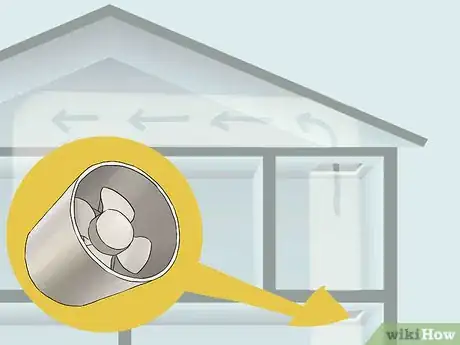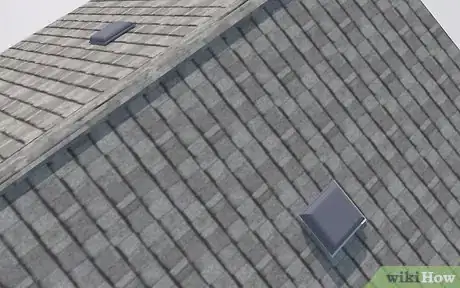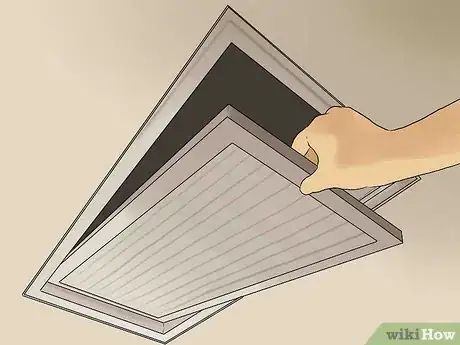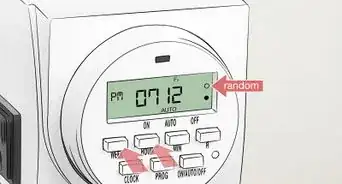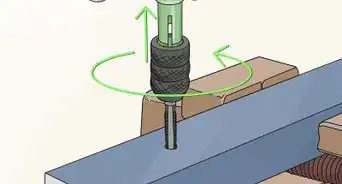This article was co-authored by Alberto DeJesus. Alberto DeJesus is a Construction Specialist and the CEO of DeJesus Industries. With more than four years of experience, he specializes in high-end real estate development and construction. Alberto and DeJesus Industries have been featured on NBC News and have worked with numerous well-known companies, including Mazda, Amazon, and CVS. Alberto holds a Bachelor’s degree from Boston University.
There are 7 references cited in this article, which can be found at the bottom of the page.
This article has been viewed 43,604 times.
You may be more likely to think about your attic during the winter when you can lose heat if it’s not properly insulated. Yet, as the summer heat rises, it’s just as important to make sure you’ve taken steps to keep your attic well-ventilated and give the heat somewhere to go (namely, back outside). There are many methods that vary in their difficulty to install, price, and energy efficiency, and it’s important to choose the right option for your attic to prevent high temperatures, damaged or destroyed shingles, and retention of moisture leading to mold and rot.
Steps
Install an Electric Attic Fan
-
1Research your options. While there are many different brands available, there are two basic options for an attic fan. Either variation can be completed by DIYers and has the added option of programming the fan to only come on if the attic reaches certain temperatures.[1]
- Roof-mounted fans are set into the roof of your house and will require you to cut into the roof during installation. You’ll then need to feel comfortable shingling around the fan area, though the installation process itself is relatively easy.
- Wall-mounted fans are meant to fit into a gable wall and for extra ease can be installed in place of an existing gable vent, which means you won’t have to remove any shingles or make significant changes to your attic.
- Keep in mind that fans are different, and there are no universal directions concerning the installation process. Follow specific directions indicated on your box.
-
2Install a roof-mounted fan if desired. If you're not sure about installation, don't hesitate to contact a professional. Otherwise:
- Start by removing the shingles of the roof somewhere near the peak where you’re planning to install the fan.
- Cut an opening and install the fan over the opening.
- Re-shingle around the base of the fan.
- Contact an electrician to finish wiring the fan to a thermostat and make sure the electrical work meets code for your house.
Advertisement -
3Install a wall-mounted fan if it suits you better. If you're not sure about installation, don't hesitate to contact a professional. Otherwise:[2]
- Decide which gable to replace with a fan and make sure the fan you’re buying is approximately the same size or larger.
- Use a piece of plywood to mount the fan by selecting a piece of plywood of the right size, cutting an opening in the plywood, centering the fan over the opening and mounting the fan brackets to the plywood. Be sure to center the opening you cut in the plywood for the fan over the opening in the attic wall.
- Mount the plywood and fan to the attic wall.
- Contact an electrician to finish wiring the fan to a thermostat and make sure the electrical work meets code for your house.
Install a Ventilation System of Ridge/Soffit Vents
-
1Measure your net free ventilating area (NFVA): Attics need a certain amount of ventilation based on their square footage. Divide the area of your attic by 150 to find your NVFA and determine how many of each type of vent you’ll need to install (compare the area you need to cover with the area each vent covers, as stated on their packaging).[3]
-
2Install the ridge vent: The ridge vent will create a space for heat to escape the attic, which is why these vents are at the peak of the roof. To install the vent,[4]
- Remove all cap shingles.
- Starting 6 inches from the end of the roof, cut through any shingles about 1.5 inches from the ridge, and use a power saw with a blade depth of about .75 inches to cut through the wood sheathing and create an opening.
- Install the ridge vent according to the type of vent you’ve purchased: for a shingle-over ridge vent, pre fasten the first section and add others until you’ve covered the entire opening, and for metal ridge vents align the vent over the opening and fasten with 2 inch roof nails.
- Metal ridge vents will require straps over the joints that will also need to be fastened with roofing nails.
- Shingle-over ridge vents get a layer of shingles so the look of the roof is less interrupted. Cut the cap shingle to size and reattach.
-
3Install the soffit vents: Soffit vents are located lower in the eaves of the house and draw in cooler air (forcing the hotter air out through the ridge vent). Without both sets of vents, air will not circulate through the attic and you’ll need another method of keeping it cool. However, for an easy, energy-efficient method, install soffit vents:
- Determine the placement of soffit vents that will be free of objects and other obstructions. Remove the insulation that creates a barrier between you and the site of installation.
- Use a power saw to cut an opening for each of the soffit vents. The opening should be just slightly smaller than the vents themselves. Discard the removed pieces of wall.
- Place the vents and use screws to attach them to the eaves, and caulk the edges to ensure a tight fit with no air leakage.
- Reapply the insulation, though if the insulation prevents airflow in through the soffit vents and out through the ridge vent, insert baffles.
Add an Extra Air Conditioner to Your Home
-
1Determine your cooling needs: Is the attic a space you use for storage, or is it an extra living space that you or members of your family will be spending a lot of time in? If the space is being used often, it may warrant adding another air conditioning unit or extending your central air system to include the attic.
-
2Determine what A/C services you use for the rest of your home: If you’re using central air, contact whomever performs your a.c. installation and services to discuss extending cool air to the attic, and work with a professional to incorporate that space in your home. If you use window air conditioners, consider whether you want to add another unit or if you want to make the switch to central air. Either contact a professional or find a window unit that fits in your space.
-
3Insulate your attic: If your attic is not or is poorly insulated, using an a.c. unit will simply waste money by allowing cool air to escape outside. Reevaluate your insulation and upgrade if needed.[5]
Warnings
- Attics can get incredibly hot - take breaks during your work and stay hydrated.⧼thumbs_response⧽
- Most attic ventilation is relatively easy but contact a professional in your area if you’re unsure about what your best option is or how to complete the installation.⧼thumbs_response⧽
- Be sure you find a stable place to stand on the roof and keep your tools nearby. Consider different options of securing your tools within reach to prevent losing your balance.⧼thumbs_response⧽
References
- ↑ https://www.popularmechanics.com/home/how-to/a156/1275656/
- ↑ https://www.popularmechanics.com/home/how-to/a156/1275656/
- ↑ https://todayshomeowner.com/adding-soffit-vents/
- ↑ https://www.finehomebuilding.com/2012/01/27/replacing-a-roof-how-to-cut-and-install-a-ridge-vent
- ↑ https://www.thisoldhouse.com/ideas/10-ways-to-beat-heat
- http://www.energy.gov/energysaver/articles/ventilation-systems-cooling
- http://www.structuretech1.com/wp-content/uploads/2013/12/Early-History-of-Attic-Ventilation.pdf
- https://www.usfa.fema.gov/downloads/pdf/statistics/v11i6.pdf
About This Article
Your attic can get really hot in the summer, but luckily you have several options to keep the temperature down. One of the easiest options is to purchase an AC window unit to run in your attic. Alternatively, install a roof-mounted fan, which can be set to come on when the temperature increases beyond a certain point. The installation will involve cutting into the roof and shingling around the fan area, so if you’re not sure about doing this, you’ll need to contact a professional. You could also consider linking your attic to your home’s central AC system if it has one. To do this, talk to your AC maintenance provider. For tips on how to install a ventilation system of ridge-soffit vents, keep reading!

